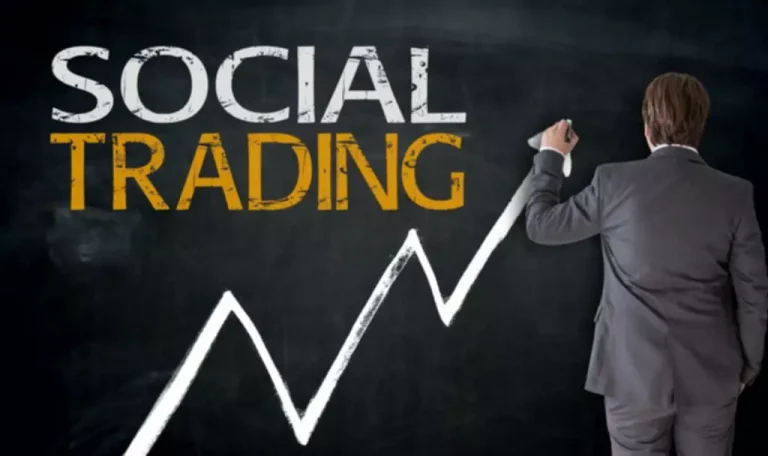Considering active vs passive investment management
Content
Instead of letting recent performance enchant you into chasing returns, you should instead consider current market conditions and what the future could hold. Active/passive cyclicality is further demonstrated with high and low amounts of stock “home runs”—that is, a stock that outperforms the benchmark by 25% or more. Markets that feature large amounts of what are the pros and cons of active investing home runs signal dispersion in stock returns. High dispersion should benefit active managers who can single out the winners, whereas a low number of home runs indicates stocks are moving together, which typically benefits passive management.
Choose a Reddit account to continue
After all, we’re prone to see active things as more powerful, dynamic and capable. Active and passive investing each have some positives and negatives, but the vast majority of investors are going to be best served by taking advantage of passive investing through an index fund. But this figure doesn’t penalize the 32 List of cryptocurrencies actively managed funds that were merged or liquidated out of existence during this period, most likely due to their poor performance. Mutual fund companies don’t generally scrap winning funds from their product line-up.
How to Choose the Right Business Credit Card for Your Business
Even active fund managers whose job is to outperform the market rarely do. It's unlikely that an amateur investor, with fewer resources and less time, will do better. An active investing strategy can be suitable for investors who are willing to pay more for a shot at potential returns. They also have https://www.xcritical.com/ a higher tolerance for risk and prefer a more hands-on approach to building wealth. Some might have lower fees and a better performance track record than their active peers.
What are the Potential Benefits of a Passive Investment Strategy?
Unlike with active investing, the aim is to match the market indices that are followed rather than outperform it. ETFs are typically looking to match the performance of a specific stock index, rather than beat it. That means that the fund simply mechanically replicates the holdings of the index, whatever they are. So the fund companies don’t pay for expensive analysts and portfolio managers.

While the difference between 0.66% and 0.05% might not seem like a lot, it can compound the cost of your investment by thousands of additional dollars if you buy and hold your investment through multiple decades. This gives you one indicator of the difference between an active fund and its cheaper passive alternatives. Divide a fund’s active share or tracking error by its expense ratio and compare it to a custom benchmark or peer group.
Monthly analysis on every investment sector and universe highlighting the ranking and performance of each fund. Please consult your tax or legal advisor to address your specific circumstances. There’s no one-size-fits-all approach to investing – perhaps, you’ll determine that a mix of both strategies could fit into your goals. Eager to explore personalized investment options and find the right fit for your financial journey? Contact Navy Federal’s Investment Services to connect with a financial advisor in your area, or check out our online tool for do-it-yourself investors. Founded in 1993, The Motley Fool is a financial services company dedicated to making the world smarter, happier, and richer.
These methods don’t try to beat overall market performance but instead aim to match its movement over time. The first is known as an active investing strategy, while the second is passive investing. Passive index funds or an actively managed portfolio — the choice isn’t as simple as it might sound. By far, the Standard & Poor’s Indices Versus Active Scorecard—or SPIVA® to its friends—is the best-known, ongoing report for tracking active vs. passive investment results.
Over the past year, it returned 16.85%, surpassing the sector average of 14.09%. Its three-year performance is even more impressive, with a growth of 25.80% against the sector average of 10.62%. Over five years, the ETF achieved a return of 55.20%, well above the sector average of 45.43%, highlighting its ability to provide substantial returns over a longer term. These outcomes place it among the top-performing passive funds in the IA Europe Ex UK sector. TIAA managed accounts offer professional management to help you feel confident your portfolio is aligned with your goals and investment style, especially during continued volatility.
- The funds and other products referred to on this Site may be offered and sold only to persons in the United States and its territories.
- All this evidence that passive beats active investing may be oversimplifying something much more complex, however, because active and passive strategies are just two sides of the same coin.
- Read on to learn about the differences between active and passive investing, the pros and cons of each and which one may be right for you.
- This is exactly what Morningstar has been doing with its semi-annual Active/Passive Barometer report.
- While a single corporation may only have one or two classes of common stock, it typically will have a relatively large set of different fixed income securities outstanding.
- Maintaining a well-diversified portfolio is important to successful investing, and passive investing via indexing enables investors to achieve diversification.
- The investing information provided on this page is for educational purposes only.
These investors search for and buy investments that are performing or that they believe will perform. If they hold stocks that are not living up to their standards, they sell them. The value of an investment and the income from it may go down as well as up and investors may not get back the amount originally invested. Active investing is pretty much the opposite approach, relying on frequent and active trades in specific securities and instruments with the goal of outperforming the market. The second, is that it offers very little flexibility as investors cannot make tactical moves in response to market conditions and opportunities. It involves an analyst or trader identifying an undervalued stock, purchasing it and riding it to wealth.

This is exactly what Morningstar has been doing with its semi-annual Active/Passive Barometer report. They then calculate an equal-weighted average return for this passive group, which becomes the hurdle rate for an active manager to beat. The ETF uses full replication to track the Euro Stoxx 50 Index, which means it invests in all the stocks that make up the index, in the same proportions. The ETF's success is due to its focus on stable, large-cap Eurozone companies, providing a balanced mix of risk mitigation and growth potential.
Active strategies, in contrast, strive to outperform the market, net of fees, by relying on managers' research and analytical skills to buy and sell individual securities. In general, they also charge higher fees due to the additional costs of management and the potential to earn excess returns relative to the market. Today, passively managed assets comprise more than half of all U.S. domestic equity strategies (Figure 1). Our portfolio construction process incorporates both active and passive strategies, seeking to capitalize on the benefits of each approach and, for taxable investors, keeping tax efficiency top of mind. Our manager research team and due diligence process maintain a strong platform of active, passive, and smart beta strategies.
Some active strategies are more focused on risk mitigation, but on a general level, passive funds are considered lower risk. Unlike some active traders, buy-and-hold passive investors do not seek to profit from short-term price fluctuations or market timing. The market’s history of posting positive returns over time is the key central assumption of passive investment strategy. Passive investing is typically done by investing in a mutual fund or exchange-traded fund (ETF) that mimics the index’s holdings, either exactly or approximately. The strategy's name reflects the fact that managers who use the strategy do not have to actively hunt for investments; they simply buy and sell the investments that their target benchmark trades. In contrast, active investors must research and decide which securities to own.
This highlights a higher probability for active funds to underperform than their passive counterparts. This material does not take into account any specific objectives or circumstances of any particular investor, or suggest any specific course of action. Investment decisions should be made based on the investor's own objectives and circumstances. Active investing involves hands-on management of a portfolio with the goal of outperforming a benchmark index through frequent buying and selling of securities.
Passive investors lean more toward investments that they’ll hold for longer periods of time. While there may be minor maintenance or annual adjustments needed for these holdings, they overall require minimal management or decision-making after the initial purchase. Passive investments also tend to make diversification easier (because you’re working with a longer timeframe) and are generally lower-maintenance and lower-cost.
